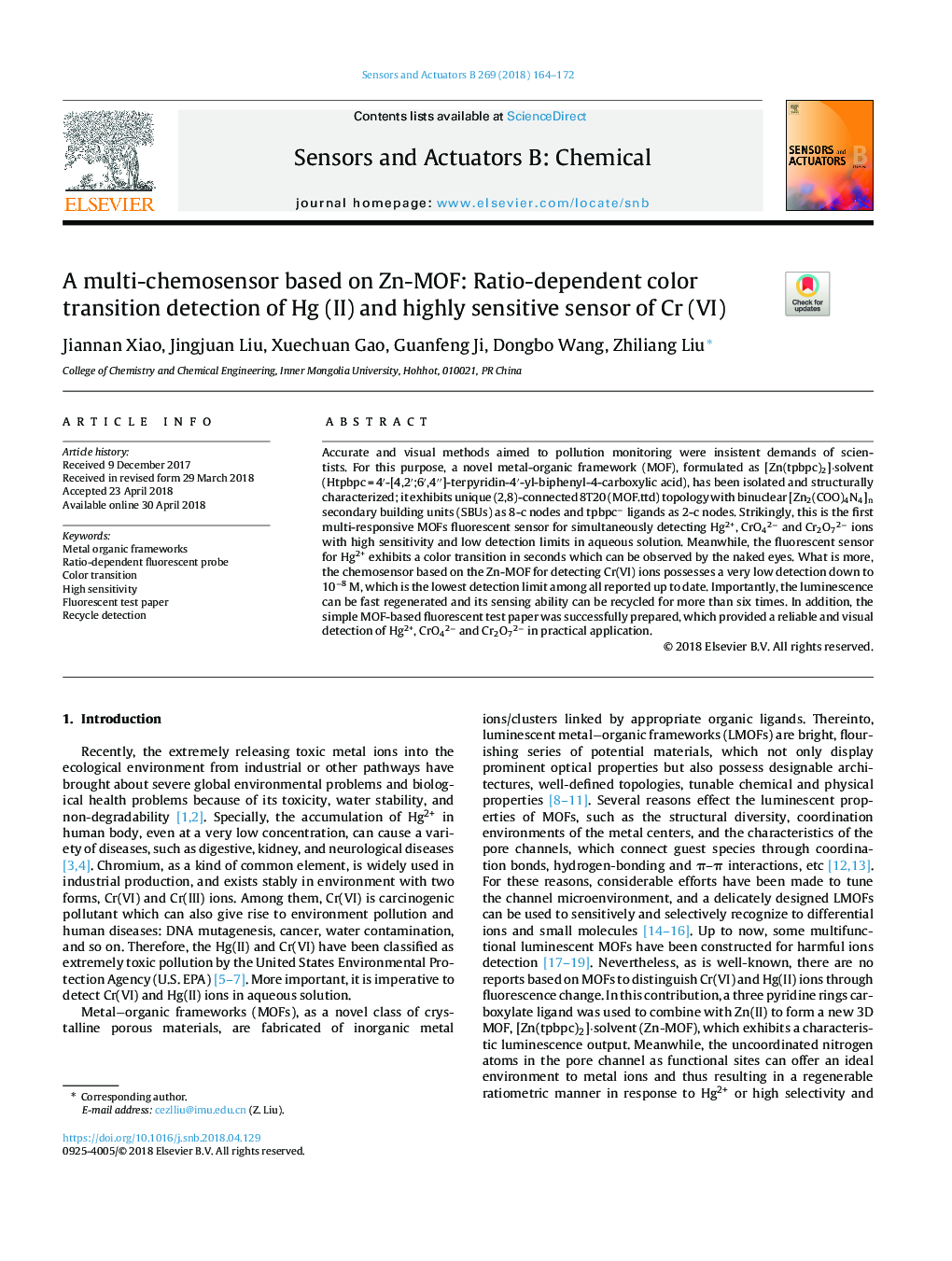| Article ID | Journal | Published Year | Pages | File Type |
|---|---|---|---|---|
| 7139135 | Sensors and Actuators B: Chemical | 2018 | 9 Pages |
Abstract
Accurate and visual methods aimed to pollution monitoring were insistent demands of scientists. For this purpose, a novel metal-organic framework (MOF), formulated as [Zn(tpbpc)2]·solvent (Htpbpcâ¯=â¯4â²-[4,2â²;6â²,4â²â²]-terpyridin-4â²-yl-biphenyl-4-carboxylic acid), has been isolated and structurally characterized; it exhibits unique (2,8)-connected 8T20 (MOF.ttd) topology with binuclear [Zn2(COO)4N4]n secondary building units (SBUs) as 8-c nodes and tpbpcâ ligands as 2-c nodes. Strikingly, this is the first multi-responsive MOFs fluorescent sensor for simultaneously detecting Hg2+, CrO42â and Cr2O72â ions with high sensitivity and low detection limits in aqueous solution. Meanwhile, the fluorescent sensor for Hg2+ exhibits a color transition in seconds which can be observed by the naked eyes. What is more, the chemosensor based on the Zn-MOF for detecting Cr(VI) ions possesses a very low detection down to 10â8â¯M, which is the lowest detection limit among all reported up to date. Importantly, the luminescence can be fast regenerated and its sensing ability can be recycled for more than six times. In addition, the simple MOF-based fluorescent test paper was successfully prepared, which provided a reliable and visual detection of Hg2+, CrO42â and Cr2O72â in practical application.
Related Topics
Physical Sciences and Engineering
Chemistry
Analytical Chemistry
Authors
Jiannan Xiao, Jingjuan Liu, Xuechuan Gao, Guanfeng Ji, Dongbo Wang, Zhiliang Liu,
